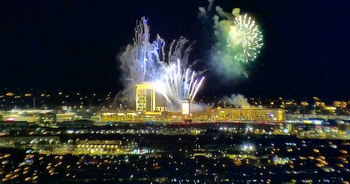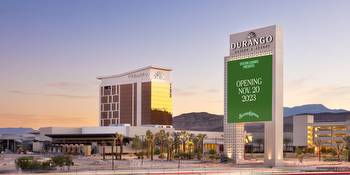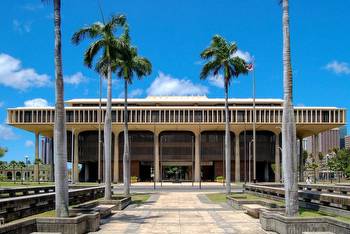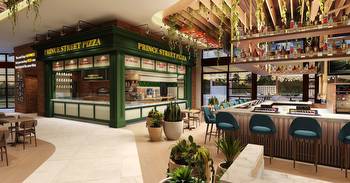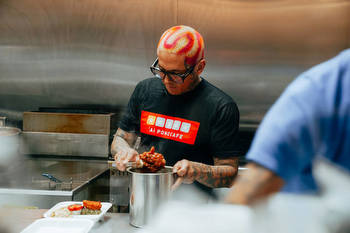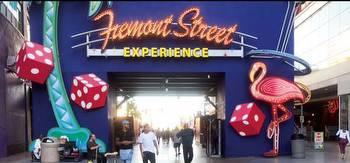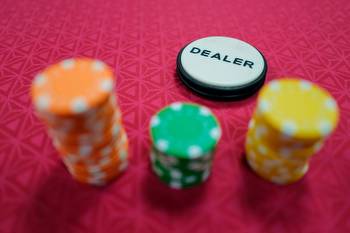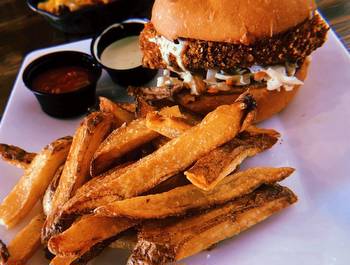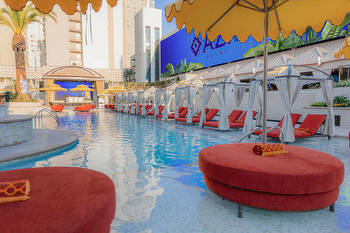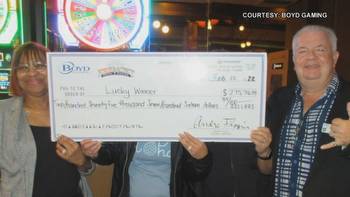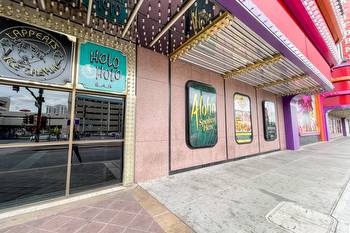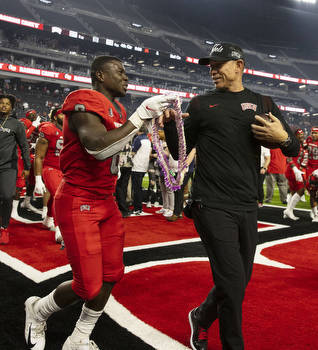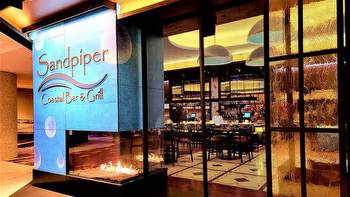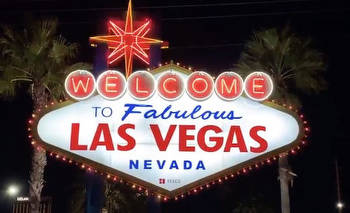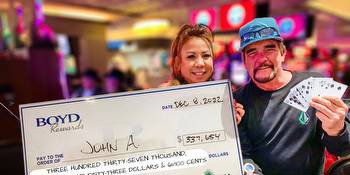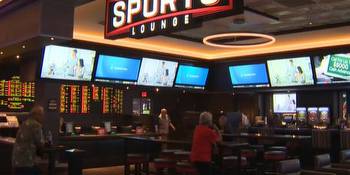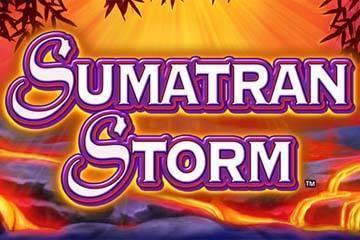The Decades-Long Romance of Las Vegas and Hawaii

If an oxtail soup from Hawaii seems an unlikely thing to eat in Las Vegas, you have a lot to learn about both places, as I did, and still do. Census data from 2020 showed that Clark County, Nevada, which includes Las Vegas, was the U.S. county with the largest population of native Hawaiians outside of Hawaii, a statistic that tells only part of the story. The word “Hawaiian” typically applies to the islands’ Indigenous population, descendants of the Polynesians who first settled Hawaii, between 1000 and 1200 A.D., and who were nearly eradicated by the arrival of Europeans, in the late eighteenth century. Other people born and raised on the islands—many of them the descendants of migrant laborers from Japan, Korea, China, the Philippines, Portugal, and Puerto Rico, who came to work on sugarcane and pineapple plantations—are known as kamaaina (residents), “Hawaii people,” or “locals.” The last of these terms applies even in Vegas, where there are so many Hawaii people that they’ve given the city an affectionate nickname: the Ninth Island.
The California Hotel—the Cal, to regulars—has played a central role in the Hawaii-to-Vegas pipeline. Opened in 1975 by Sam Boyd, an Oklahoma-born entrepreneur, it was the first property in what would become Boyd Gaming, one of the largest casino-management corporations in the country. According to William Boyd, Sam’s son, who wrote the foreword for a book about the hotel from 2008, the Cal was named for its original intended audience, gamblers from California. But, a year in, “we were struggling,” William wrote. “One day [my dad] said to me, ‘You know, we’re going to need a niche market here and that’s going to be Hawai‘i.’ ”
After living and working in Honolulu for several years, Sam Boyd had developed an affinity for the islands and their people, whom he found to be “industrious” and who seemed to love gambling, which has always been illegal there. The Cal lured guests from Hawaii with promotions that included discounted airfare, free rooms, and credits for meals at a restaurant called Aloha Specialties, which is still part of the hotel today. The answer to where you vacation when you live in paradise was, apparently, Las Vegas. Gamblers from Hawaii were “unlike anything the Vegas market had experienced,” according to one of the 2008 book’s authors, Dennis M. Ogawa, a professor emeritus of American studies at the University of Hawai‘i at Mānoa. Not only did they spend much more money per day than the average tourist, Ogawa writes, but they’d also “arrive in groups, laden with luggage they had filled with gifts for the staff: fresh pineapples, Maui onions, Kona coffee, and boxes of chocolate-covered macadamia nuts.”
When I arrived at the Cal on a sunny Monday afternoon, a down-on-his-luck man, slumped in a tree bed on the sidewalk outside, looked up at me with a grin and said, “Aloha.” The Cal, and downtown Vegas more broadly, has seen more glamorous days, but, inside, a wholesome sense of nostalgia hung in the air, along with the scent of cigarette smoke. The carpeted floor of the casino was patterned with enormous hibiscus flowers; outside the Ohana conference room, I met a man wearing a midnight-blue T-shirt printed with the word “SPAM” in the brand’s signature yellow font—a show of support, he explained, for Spam’s parent company, Hormel Foods, which had helped to rehabilitate Maui after the devastating wildfires in 2023. “I thought maybe you were a Spam fanatic,” I said. The man, whose name was Gene, laughed and said, “Well, isn’t everyone from Hawaii a Spam fanatic?”
Gene was at the Cal for the sort of event that has become commonplace there over the years: a reunion for a high school in Hawaii, in this case Hilo High, class of 1955. (The Maui High class of ’53 was meeting on the same dates.) Spam was introduced to the islands when Gene was a child. Originally served to G.I.s stationed there during the Second World War, it became a staple of the local diet, incorporated into everything from musubi—Hawaii’s version of onigiri—to saimin, a dashi-based noodle soup. In general, the Cal’s clientele seemed to skew elderly; at check-in, the young woman behind the front desk greeted guests in line ahead of me as Auntie and Uncle.
Beyond the hotel, I found a vibrant, multigenerational world of Hawaii people. In the decades after the casino opened, the appeal of Vegas grew as not only a place to vacation but also a place to live. In 1992, the Hawaii-born playwright Edward Sakamoto published a play called “Aloha Las Vegas,” about a widower named Wally who is weighing a move from Honolulu. An old friend named Harry, who has already relocated, urges him to do the same. “Aeh, it’s a mass exodus to Vegas,” Harry says, in Hawaii pidgin. “Lodda people in Hawai‘i house-rich and cash-poor.” Thirty years later, the line holds up. When I asked Jennifer Vergara, a forty-two-year-old transplant from Honolulu, why so many Hawaii people of her generation had left home, she replied matter-of-factly: “Gentrification. Developers. Inflation.” In Honolulu, most of her friends—schoolteachers, policemen—were struggling, and in many cases living with their parents, even after having kids of their own. Better jobs and plentiful real estate beckoned, oasis-like, from the Mojave; in Vegas, Vergara and her husband, who have two kids, are employed as nurses and own a three-bedroom home.
Perhaps nothing so clearly reflects this ongoing exodus as the city’s landscape of restaurants. It would be easy to define the food in Vegas by the offerings at its lavish casinos and hotels, many of them pandering to the tastes of high-rolling tourists, all caviar and king crab and Wagyu. But, off the Strip, there are hundreds of humbler, family-run, counter-service establishments, a strip-mall ecosystem reminiscent of greater Los Angeles. From the airport, I drove to a restaurant called 2 Scoops of Aloha, which shares a shopping plaza with two insurance offices, an acne clinic, and an iPhone repair store. There, I ordered what’s known in Hawaii as a plate lunch. Born of the hearty appetites of plantation laborers, a plate lunch usually includes two scoops of rice and one of macaroni salad, plus meat or fish. I opted for fried chicken two ways—one portion smothered in a garlicky gravy, the other slicked in a sweet-spicy Korean-style glaze—and a side of poi, a Polynesian dish of boiled taro, pounded into a viscous paste.
The meal illustrated the fusion inherent in the islands’ cuisine, a collision of cultures that don’t cohere so much as happily coexist. Johnathan Wright, a restaurant reporter for the Las Vegas Review-Journal who was raised in Honolulu, defined the cuisine as “whatever I grew up eating”: galbi (Korean short ribs), Cantonese roast duck, manapuas (Hawaii’s take on baos), Spam. Jeremy Cho, a Korean American professor at the University of Nevada, Las Vegas, who was born in Hawaii, told me that he’d been surprised by the city’s abundance of Hawaii-style Korean food, distinct from the Korean food you’d encounter in L.A. or Fort Lee, New Jersey. In Vegas, as in his home state, it was easy to find a plate lunch featuring what’s known in Hawaii as meat jun, a pancake made of egg-battered beef.
More than one kamaaina described food as closing the gap between the tropics and the desert. “Poke Express, that tastes like home,” Vergara said, of a takeout place she frequents. Alysa Andrade, an organizer of Pure Aloha, one of Vegas’s Hawaii-themed festivals, founded in 2004, described a boom in restaurants serving “island food,” as well as other businesses targeting locals: pool detailing, tribal-tattoo artists, Hawaiian-language classes. “When I go back home, I want to come back here,” Andrade told me over a slice of guava cake and chunks of pineapple sprinkled in powdered li hing mui (pickled and dried plum), at Straight Up Cafe, whose menu promises “killah grinds,” pidgin for great food. “I like Vegas. I feel like everyone’s doing the same thing back home. They’re just still in the same place where I left them twenty years ago.”
Some people visit Las Vegas in order to feel as though they’re somewhere else entirely: Venice, Paris, a post-apocalyptic Earth imagined by Darren Aronofsky. Eating poke in a strip mall, I couldn’t help but think about how much better it would taste if I were near the ocean, a salty breeze blowing off the waters where the fish had been caught. But eating poke at ‘Ai Pono Cafe, in the high-gloss food court of a brand-new casino called Durango, is transportive, an experience that delivers on the city’s promise. Gene Villiatora, ‘Ai Pono’s chef and owner, moved to Vegas from Hawaii in 1993, “the same night as the grand opening of the MGM Grand,” he told me, and worked as a dishwasher at Aloha Specialties, in the Cal, before bouncing around some of the Strip’s toniest kitchens and then competing on “Top Chef,” in 2008. At Durango, ‘Ai Pono’s storefront mimics a cartoonish beach shack. Inside, Villiatora serves what he calls “Hawaii street food”: a refined spin on a Korean-inspired plate lunch, featuring a strip of tender galbi and a meat jun, griddled golden and crisp; a spectacular fried chicken thigh shellacked in a chili-pepper-guava glaze that tastes strikingly of the juicy fruit. A dozen yards away, on the casino floor, animated bison stampede across the screens of digital slot machines, a game called Buffalo Ascension promising gold. ♦








